- Blog
- Copywriting for Automotive Websites - Best Practices for Dealerships
Copywriting for Automotive Websites - Best Practices for Dealerships
Master automotive copywriting with these dealership-focused tips. Improve customer engagement and drive more leads to your dealership.

Effective copywriting for car dealerships plays a crucial role in attracting and converting potential buyers. In today’s competitive online marketplace, dealerships need to stand out with clear and engaging content that speaks directly to their target audience.
By following best practices for automotive copywriting, dealerships can create website content that not only showcases their inventory but also builds trust, improves SEO, and drives more leads.
Whether it's crafting compelling vehicle descriptions or writing attention-grabbing calls-to-action, a strong copywriting strategy is essential for turning website visitors into loyal customers.
How can you identify bad copywriting practices?
Bad copywriting practices can be identified both through user experience and performance data. From a reader's perspective, content that is difficult to follow or visually unappealing can create a frustrating experience, leading to disengagement.
On the data side, these issues often lead to declining performance, such as reduced visibility, lower conversions, and less audience engagement. Whether due to unclear messaging or ineffective structure, poor content weakens the overall success of a website.
From a reader’s perspective
Identifying bad copywriting practices on a website is often easy from a reader’s perspective. One of the most common issues is unformatted content that feels overwhelming and hard to read.
For example, if a dealership’s website presents a long "wall of text" with no paragraphs or breaks, visitors are likely to feel intimidated and click away. Similarly, a lack of headers makes it difficult for readers to quickly scan the page and find the information they need.
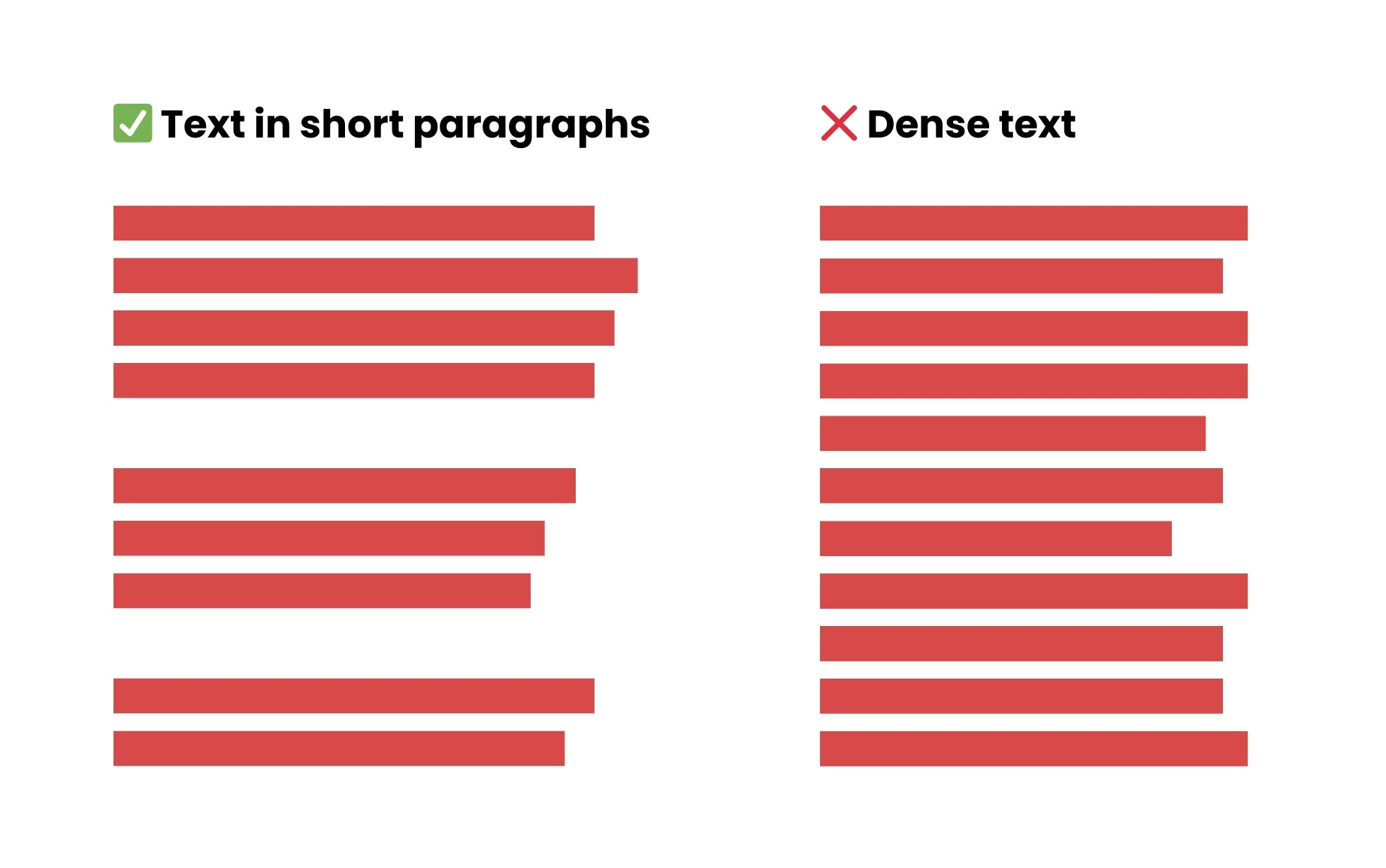
Other bad copywriting practices include using overly technical jargon that alienates the reader, especially if they are unfamiliar with industry terms. A dealership's copy should aim for clarity, using language that’s easy to understand for all audiences.
Additionally, poor grammar and spelling mistakes can damage credibility and professionalism, making the website seem untrustworthy. Recognizing these red flags is crucial to improving your website’s effectiveness and keeping visitors engaged.
From a data perspective
Identifying bad copywriting practices often involves key performance indicators like low organic rankings.
Poorly written or unoptimized content can hurt a website’s SEO, making it harder for search engines to rank the site. This leads to reduced visibility and fewer potential customers finding the dealership through search queries.
Conversion rates are another important metric. If visitors land on a website but aren't taking action, the content may not be persuasive enough. Low conversion rates suggest the messaging isn’t resonating with visitors or encouraging them to move forward.
High exit rates also signal ineffective copy. When users leave after viewing just one page, it indicates that the content isn’t engaging them. Low repeat visitor rates suggest the copy isn’t leaving a lasting impression, missing opportunities to build long-term customer relationships.
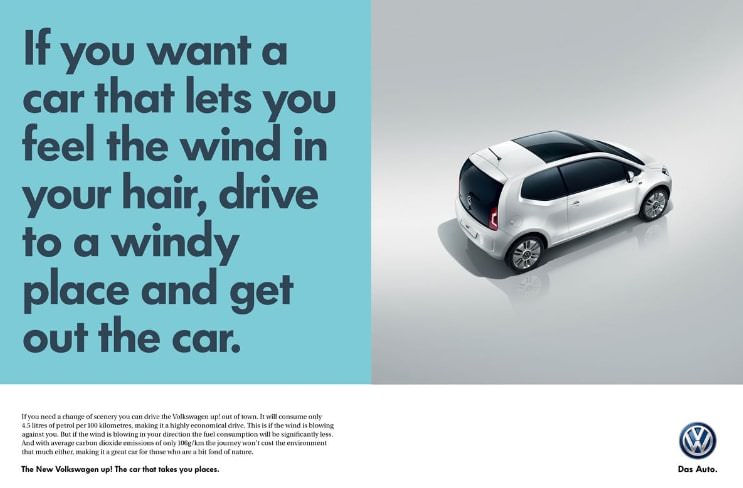
Hook the reader to leave an impression
When metrics like organic rankings, conversion rates, exit rates, and repeat visits are consistently low, it’s clear the copy needs improvement. Poor content can greatly weaken a website’s performance, making it essential to address the issues and fix the mistakes.
So, how to create better automotive content?
Creating better automotive content involves understanding your audience and tailoring your messaging to meet their needs. This approach not only enhances the customer experience but also increases the likelihood of converting leads into loyal buyers.
By tailoring your automotive content to the sales funnel, you can guide potential customers through their buying journey. Regularly analyze performance metrics to refine your content strategy and ensure you’re checking all the right boxes.
Focus on your audience and customers
Focusing on your audience and customers is essential for effective marketing and automotive content writing. Customer-centric approach enhances engagement and drives conversions, as customers are more likely to respond positively to content that addresses their specific challenges.
Define your personas
Personas are semi-fictional representations of your ideal customers based on data and research. Creating detailed buyer personas allows dealerships to tailor their content and marketing strategies to resonate more effectively with specific groups of potential customers.
For example, a persona might be a fleet manager interested in maintaining a cost-effective and reliable fleet, or a business owner looking into flexible financing options to accommodate cash flow.
Define pain points in your sales funnel
By systematically defining pain points throughout the sales funnel, you can create a more targeted and effective marketing strategy. Start by gathering insights directly from your target audience.
Use surveys, interviews, and focus groups to ask customers about their experiences and challenges related to your products or services. This qualitative data will help you identify specific pain points. implement strategies to address them and monitor the results.
Adjust content for the audience
By aligning content with the interests and pain points of each audience segment, dealerships can improve engagement and drive conversions.
For example, a dealership specializing in fleet vehicles might produce content focused on the total cost of ownership, highlighting fuel efficiency and maintenance considerations for fleet managers.
In contrast, a dealership catering to construction companies could emphasize the durability and reliability of their heavy-duty vehicles, showcasing real-world applications and case studies.
You have just seconds to grab the reader’s attention - take care of your headers!
Creating compelling headers is essential for structuring content effectively on a webpage, particularly for B2B dealerships. Well-crafted headers not only grab the reader’s attention but also guide them through the content, making it easier to digest and understand.
Headers should clearly convey the main idea of the section that follows while being engaging enough to capture the reader’s interest. For a B2B dealership, this means using industry-specific terminology that resonates with your target audience.
By incorporating relevant keywords and encouraging action, headers can significantly improve both user experience and SEO performance, ultimately leading to higher engagement and conversions.
Examples of good headlines on a dealership’s website
Compelling headers should clearly convey the main idea of the section that follows while being engaging enough to capture the reader’s interest. Here are some of our optimized headlines:
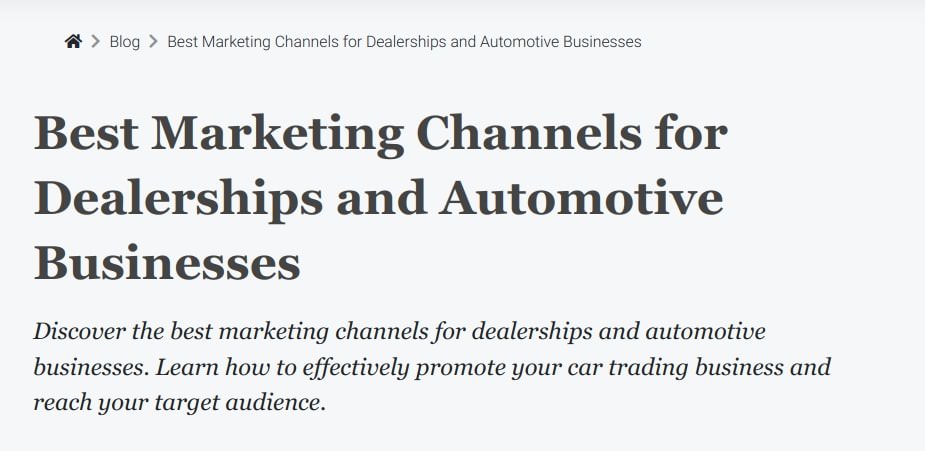

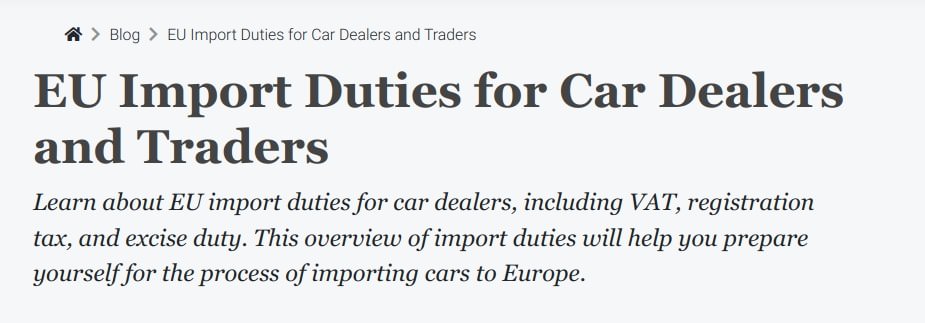
Address individual funnel levels with accurate topics and communication
At the top of the funnel, potential customers are just beginning to explore their options and may not yet be aware of your dealership. Focus on creating informative engaging content that educates about the automotive market.
- Tip: Think industry trends or car maintenance tips.
In the consideration stage, potential buyers are comparing options and looking for more in-depth information. Your content should help them evaluate their choices and position your dealership as a trusted resource.
- Tip: Think comparison guides or customer reviews.
At the bottom of the funnel, potential customers are ready to make a purchase decision. Your content should provide the final push they need to choose your dealership.
- Tip: Think promotions and incentives or appointment scheduling.
Best practices for creating car descriptions
Focus on the most important features of the vehicle and clearly articulate their benefits. Instead of simply listing specifications, explain how those features enhance the user experience.
Including technical specifications adds credibility and provides important information for decision-makers. List details such as engine type, gearbox types and mileage.
Best practices for SEO content for dealers
Optimize your content for search engines by incorporating relevant keywords naturally throughout your articles. This can improve your visibility in search results and drive more organic traffic to your website.
If your dealership serves a specific geographic area, focus on local SEO strategies. Create content that highlights local events, community involvement, or regional vehicle preferences. This can help attract nearby customers and strengthen your community presence.
For example, using relevant keywords throughout your content and ensuring your website is mobile-friendly are two simple yet effective SEO tactics, as is writing SEO-friendly car descriptions.
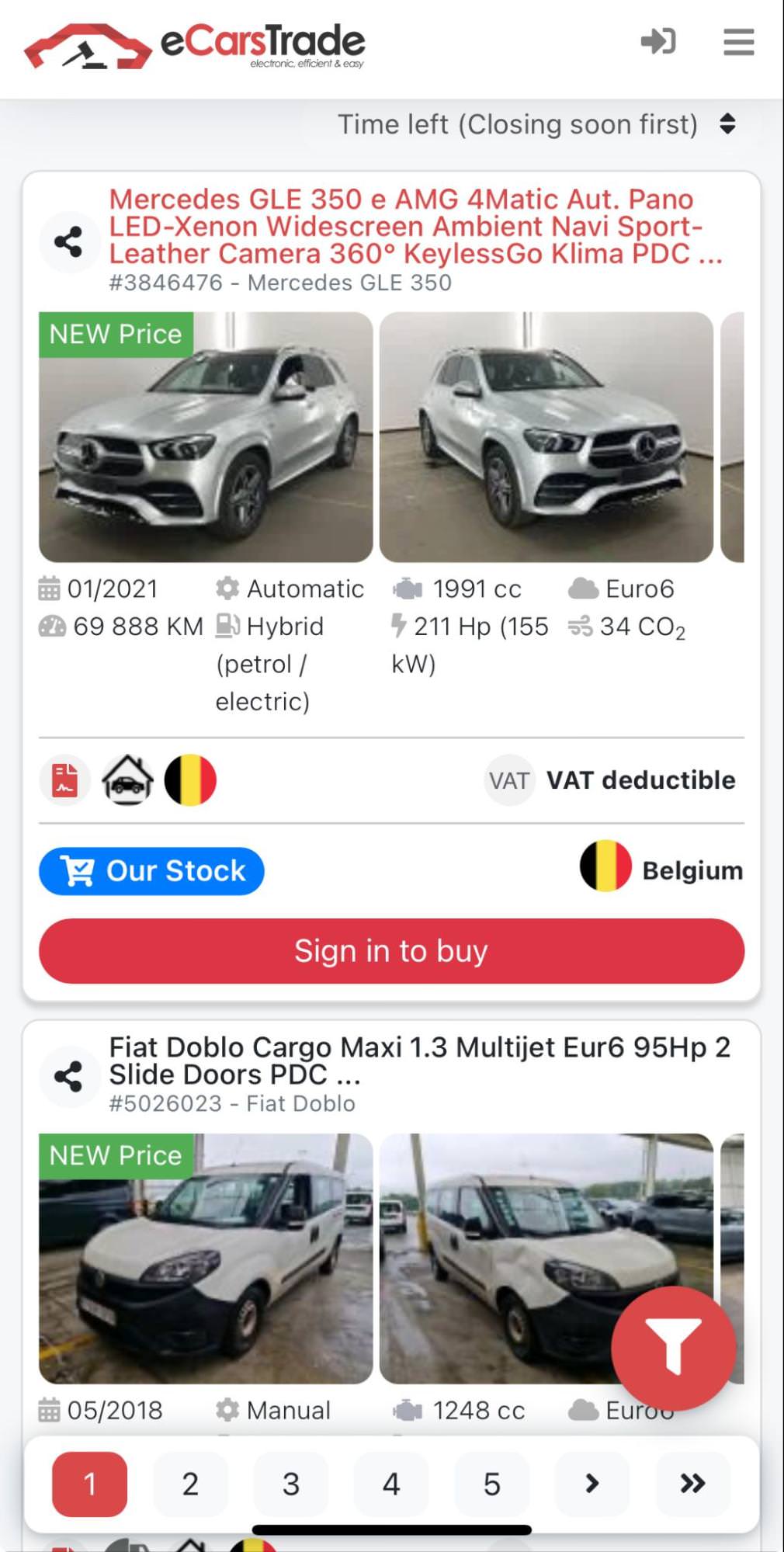
Example of a mobile-friendly page
Conclusion
To sum up, improving copy for automotive websites and campaigns requires a strategic approach that places the customer at the center of your content efforts.
Whether through car descriptions, ads, or website content, an ongoing focus on clarity, relevance, and user experience will drive better results, improving both customer satisfaction and the bottom line.
So, rev up those engines, put your creative gears in drive, and let your copywriting take your car dealership to new heights!
eCarsTrade offre aste online di veicoli ex-leasing dall'Europa!
Registrati gratuitamente
